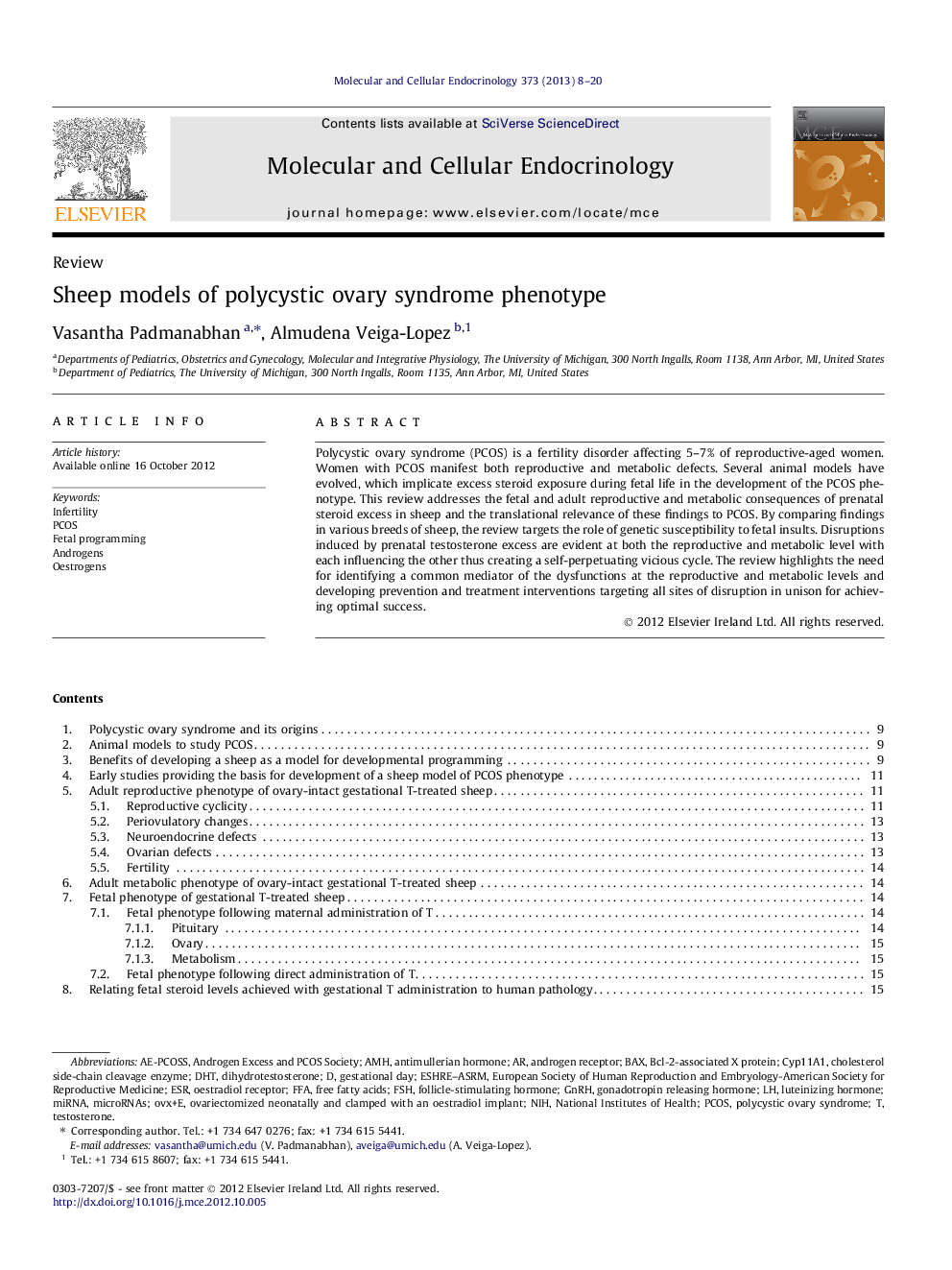| Article ID | Journal | Published Year | Pages | File Type |
|---|---|---|---|---|
| 2196138 | Molecular and Cellular Endocrinology | 2013 | 13 Pages |
Polycystic ovary syndrome (PCOS) is a fertility disorder affecting 5–7% of reproductive-aged women. Women with PCOS manifest both reproductive and metabolic defects. Several animal models have evolved, which implicate excess steroid exposure during fetal life in the development of the PCOS phenotype. This review addresses the fetal and adult reproductive and metabolic consequences of prenatal steroid excess in sheep and the translational relevance of these findings to PCOS. By comparing findings in various breeds of sheep, the review targets the role of genetic susceptibility to fetal insults. Disruptions induced by prenatal testosterone excess are evident at both the reproductive and metabolic level with each influencing the other thus creating a self-perpetuating vicious cycle. The review highlights the need for identifying a common mediator of the dysfunctions at the reproductive and metabolic levels and developing prevention and treatment interventions targeting all sites of disruption in unison for achieving optimal success.
► Prenatal T excess programs PCOS phenotype in sheep. ► Outcomes in different breeds support genetic environmental interactions. ► Prenatal T excess impacts various systems and sets a vicious cycle in motion. ► Intervention at all sites in unison is needed to achieve optimal success. ► A common mediator of prenatal T effects at multiple sites needs to be identified.
